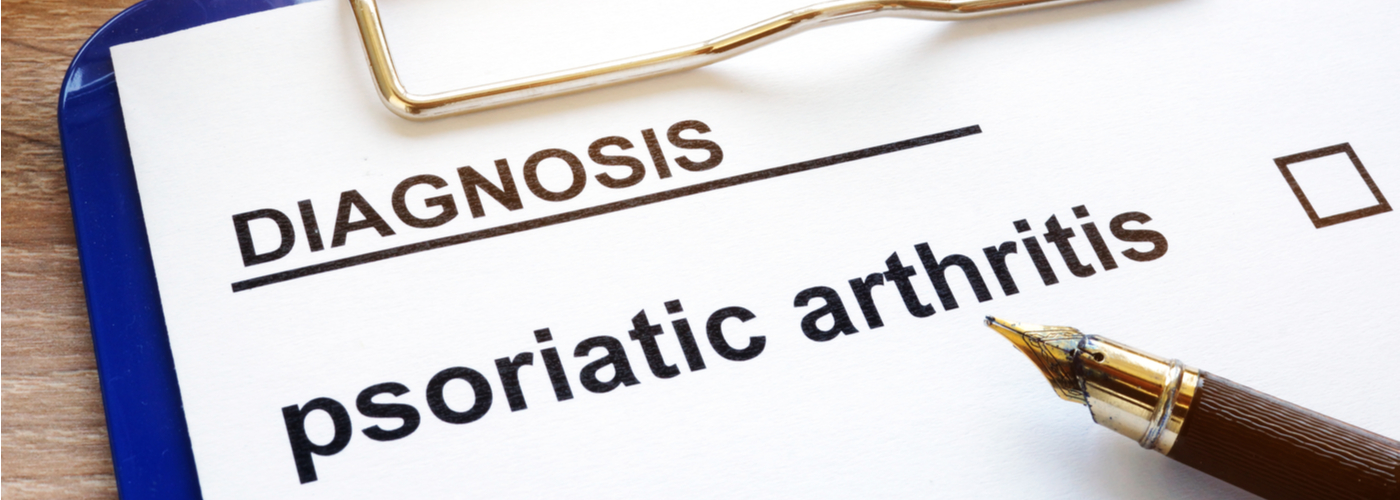How to Treat Psoriatic Arthritis
So, you or a loved one been diagnosed with or is suspected to have psoriatic arthritis. What now? Psoriasis is, actually, two ailments in one. It is a skin ailment that causes your skin to break out in rashes and patches of red that are usually itchy and can also be flaky. These usually appear in different areas of the skin and the scalp. Arthritis is also an affliction of the joints, usually painful and, at its worst, debilitating to those who suffer from extreme cases. In medical circles, psoriatic arthritis is termed PsA and it is just what it sounds like: the two of those flare ups joining forces materializing together. So when you have psoriasis, you could have joints, as well as having scaly rashes on the skin of your body.

Psoriatic arthritis and psoriasis are autoimmune conditions. This means that these diseases occur when our immune system, which is supposed to protect us against illness and infection, goes haywire and instead, for some reason or another, attacks the normal healthy cells. Like psoriasis, psoriatic arthritis is a long-term condition that could get progressively worse. If it’s severe, there’s a risk of the joints becoming permanently damaged or deformed, and surgery may be needed. PsA can begin at any age, but doctors say the symptoms often appear between ages 30 and 50. For psoriasis sufferers, the arthritis can start usually 10 years after psoriasis flare ups begin. Can you develop this disease without having psoriasis first? Sadly, yes you can, but this is far less common. It is estimated that around 1 in 5 people that suffer with psoriasis will develop psoriatic arthritis.¹
There are five types of PsA²:
1. Symmetric PsA
This type affects the same joints on both sides of your body, both your left and right knees, for example. Symptoms can be similar to rheumatoid arthritis (RA). Symmetric PsA tends to be milder and cause less joint deformity than RA. However, symmetric PsA can be disabling. About half of people with PsA have this type.
2. Asymmetric PsA
This affects a joint or joints on one side of your body. Your joints may feel sore and turn red. Asymmetric PsA is generally mild. It affects about 35 percent of people with PsA.
3. Distal interphalangeal predominant PsA
This type involves the joints closest to your nails. These are known as the distal joints. It occurs in about 10 percent of people with PsA.
4. Spondylitis PsA
This type of PsA involves your spine. Your entire spine from your neck to your lower back may be affected. This can make movement very painful. Your hands, feet, legs, arms, and hips may also be affected.
5. Psoriatic arthritis mutilans
This is a severe, deforming type of PsA. About 5 percent of people with PsA have this type. Psoriatic arthritis mutilans usually affects your hands and feet. It can also cause pain in your neck and lower back.
TREATMENT
Before starting any form of treatments you must consult with a physician to ensure that you are doing the best for your situation. The specialist for this is called rheumatologist³. They would be the best to ask as to which treatments you should take, and there are three ways to flare up.
There are medications, which should be coming straight from your doctor and after the diagnosis of your condition. These usually help to bring down the skin inflammation and help with the itchiness and redness. These will specifically target the pain and inflammation caused by the arthritis that are in your joints without ruining them.
There are studies that show that regular exercise can help stave off the afflictions on your joints⁴. The psoriasis is something that may not be stopped but exercise, in particular low impact exercise like walking and yoga, can possibly improve arthritis and alleviate some of the pain.
The most severe treatment out there would be a surgery for your joints. If the arthritis is at a stage that really is too much and cannot be helped with medication alone, then surgery may be an option with the help of physical therapy afterwards.
Any which way, you must get a doctor’s proper diagnosis to be able to figure out which is the best treatment for your case.
Tips For Managing Psoriatic Arthritis
More than 50 million adults have some form of arthritis, according to the National Center for Health Statistics.⁵ Arthritis can be a difficult and debilitating condition, but this does not mean it is unmanageable or impossible to handle. From self-management and self-care, to exercise and diet changes, there are various ways to manage and mitigate your arthritis diagnosis and the symptoms that come with it. Here are various general tips for managing arthritis.
Self-management
Self-management is an important aspect when dealing with any kind of illness and chronic pain, and this is no different when dealing with arthritis. The term “self-management” includes the day-to-day activities you can do to manage your condition. The CDC’s arthritis program recommends 5 self-management strategies to help regulate arthritis and subsequent symptoms. these 5 strategies include the following; learning new self-management skills or enrolling in self-management classes, being active, talking to your Doctor, managing your weight, and protecting your joints. Practicing one or a combination of these self-management strategies can start making a positive difference in helping to reduce your systems and offer relief.⁶
Exercise/Physical Therapy
Arthritis and the subsequent pain can often be debilitating, but this doesn’t mean there are no avenues for managing these symptoms. An oft-overlooked treatment is a tailored exercise regime and physical therapy regimen; there can be a variety of exercise and therapy strategies that can be utilized, most effectively by talking with your primary care physician and creating a system tailor-made for your lifestyle and conditions. Doctors have identified a handful of primary reasons to introduce exercise into your plans for combating arthritis symptoms including, but not limited to, keeping your joints from becoming too stiff, keeping muscles around your joints strong, and to keep bone and cartilage tissue strong and healthy. There are three main types of exercises that can be focused on; range-of-motion/flexibility, strengthening, and fitness. Physical and Occupational therapists, along with your doctor, will know what types of exercise and regimen will work best for you.⁷
Diet
Diet can be an important aspect when managing Arthritis. Though there is no specific diet that treats arthritis, foods found in the Mediterranean diet can be good for joint health and help reduce inflammation. Foods included within this group are Fish, nuts and seeds, fruits and vegetables, beans, olive oil, and whole grains. As for foods to avoid, there have been a handful of studies linking SOlanine, a chemical component in nightshade vegetables, to possibly be linked to arthritis pain. While study results have been mixed, there have been patients who report a reduction in symptoms when avoiding these vegetables. For your best, contact your primary physician and talk about what dietary options, if any, could work best for you and your situation.⁸
Managing Fatigue
Fatigue is a common and persistent foe and an expected symptom when dealing with Arthritis. An important part of managing this aspect of your diagnosis is opening a clear and communicative dialogue with your doctor. Fatigue can be caused by many different factors and therefore can require a plethora of different remedies, which is why an open dialogue with your doctor will be so important; they will help tailor a plan that best fits your needs and lifestyle, whether that focus on medication lifestyle changes or a combination of both. Though a 2017 study published in “Current Rheumatology Reports” cites that many arthritis medications don’t target fatigue specifically4, unchecked inflammation caused by arthritis can be a leading cause in patients fatigue and talking with your doctor about the best medication to treat these symptoms can go a long way with managing your fatigue symptoms. Various Lifestyle changes can be a big help in managing arthritis fatigue as well; studies conducted by Patti Katz, PhD, of the University of California San Francisco, identifies proper hydration, an exercise regime, and maintaining good sleep habits as important steps to maintaining fatigue.⁹
Finding Your Support Network
Managing Psoriatic Arthritis and its subsequent wear and tear on your body can be a daunting task, not only physically but emotionally as well; This is why establishing a support network is so important, especially for patients’ mental health through this time. An Arthritis diagnosis can come with an overwhelming influx of emotions along with pain, and it is no less important to treat these emotional aspects than the physical ones. Confusion, Frustration, Depression, and sadness are just a few emotional symptoms one can experience, but these obstacles aren’t insurmountable and there are steps you can take to mitigate the. Talking with your doctor, practicing self-care, getting involved with social activities and your community, or seeking professional counseling can all be helpful options.¹⁰
In conclusion, there are various ways to help handle and manage a psoriatic arthritis diagnosis. Fundamentally, open and honest dialogue with your primary care physician is paramount to most effectively put together a plan that works best for your lifestyle and diagnosis. This can be a stressful time in a person’s life, and we hope these tips for managing this diagnosis can help in even a small way.
REFERENCES:
[1] “Psoriatic Arthritis.” Mayo Clinic. https://www.mayoclinic.org/diseases-conditions/psoriatic-arthritis/symptoms-causes/syc-20354076
[2] “Psoriatic Arthritis.” NHS. 19 December 2019. https://www.nhs.uk/conditions/psoriatic-arthritis/
[3] “Everything You Need to Know About Psoriatic Arthritis.” Healthline. https://www.healthline.com/health/psoriatic-arthritis
[4] “Psoriatic Arthritis.” Arthritis Foundation. https://www.arthritis.org/diseases/psoriatic-arthritis
[5] OrthoInfo. “Managing Arthritis Pain With Exercise – OrthoInfo – AAOS.” OrthoInfo. Accessed April 20, 2020. https://orthoinfo.aaos.org/en/treatment/managing-arthritis-pain-with-exercise/.
[6] Centers for Disease Control and Prevention. “5 Proven Ways to Manage Arthritis.” Centers for Disease Control and Prevention. Centers for Disease Control and Prevention, February 5, 2019. https://www.cdc.gov/arthritis/basics/management.htm.
[7] U.W. Medicine.“Exercise and Arthritis.” Patient Resources. Accessed April 20, 2020. https://orthop.washington.edu/patient-care/articles/arthritis/exercise-and-arthritis.html.
[8] Nichols, Hannah. “Arthritis: Causes, Types, and Treatments.” Medical News Today. MediLexicon International, November 14, 2017. https://www.medicalnewstoday.com/articles/7621#natural_remedies.
[9] Arthritis Foundation. “How to Beat Arthritis Fatigue: Arthritis Foundation.” How to Beat Arthritis Fatigue | Arthritis Foundation. Accessed April 20, 2020. https://www.arthritis.org/health-wellness/healthy-living/managing-pain/fatigue-sleep/how-to-beat-arthritis-fatigue.
[10] “Managing Emotions and Arthritis: Arthritis Foundation.” Managing Emotions and Arthritis | Arthritis Foundation. Accessed April 20, 2020. https://www.arthritis.org/health-wellness/healthy-living/emotional-well-being/emotional-self-care/managing-emotions-and-arthritis.
